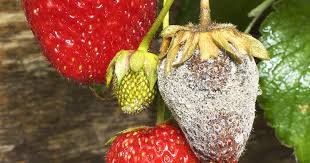It is estimated that world crop losses due to pests are around 35 percent of potential yield. However, in most tropical countries of Africa and Asia, field and storage losses are of a higher magnitude and may reach up to 50 percent in some cases.
FAO estimates show, for example, that nearly 100 million metric tons of cereal grains are destroyed by pests each year. Diseases are estimated to cause about 10 percent loss of the annual agricultural production in the U.S.A and about 20 to 30 percent in developing countries.
Therefore, it is now widely recognised that the reduction of losses caused by pests and diseases is an important factor in improving the efficiency of crop production.
Definition of pests and diseases, descriptions of disease-causing organisms, symptoms of plant diseases, and both control and preventive measures are extensively discussed in this article.
Read Also : How to Plant Fruit Trees for Optimum Performance
Definition And Classification Of Pests In Agriculture
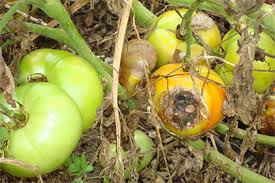
A pest is any animal or plant that harms or damages humans, animals, crops, or possessions. In agriculture, a pest is defined as any organism that causes a loss in yield or quality of crops, resulting in economic loss to the farmer. When the loss in yield reaches a certain level, the pest becomes classified as an economic pest.
The economic threshold is defined as the population density at which control measures must be initiated to prevent a pest population from reaching the economic injury level.
Classification Of Agricultural Pests Based On Economic Threshold
1. The Regular Pests: These are pests that continually damage crops and whose population levels rarely fall below the economic threshold. Examples include Maruca testulalis on cowpea, Dysdercus spp. and red bollworm on cotton, sorghum midge, and Quelea birds in many grain-producing regions of the Guinea and Sudan savanna of tropical Africa.
2. The Occasional Pests: These pests typically exist below the economic threshold but occasionally rise above it. Examples include locusts that periodically destroy cereal crops and grasses in Sub-Saharan Africa, stem borers and armyworms of cereals in western and eastern Africa, the variegated grasshopper (Zonocerus variegatus) in West Africa, and various species of snails and lepidopterous larvae that attack forest trees and arable crops.
3. The Potential Pests: These are pests whose population levels are usually far below the economic threshold but can become destructive under certain cultural conditions or when introduced into new environments. Examples include various grasshoppers and caterpillars in western and central Africa.
Description of The Important Pests of Crops in Agriculture
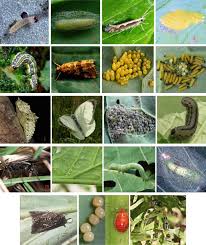
Arthropods such as insects, mites, millipedes, and woodlice are the dominant group of crop pests. Others include nematodes, rodents, birds, and mollusks.
1. Insect Pests and Their Feeding Patterns
Insects, which are arthropods, are grouped into three basic categories based on feeding patterns:
i. Biting And Chewing Insects: These insects possess toothed horny jaws (mandibles) and accessory jaws, which they use to bite and tear plant parts. They consume plant tissues in both larval and adult stages. Examples include grasshoppers, chewing beetles, caterpillars of butterflies and moths.
ii. Sucking Insects: These have a long, piercing proboscis for sucking liquid cell contents from leaves, stems, or fruits. While this weakens plants, the most severe effect is their ability to transmit diseases. Examples include aphids, capsids, mealybugs, cotton stainers, and scale insects. Fruit-piercing moths are known to damage citrus fruits.
iii. Boring Insects: These insects have mouthparts adapted to burrow into plant materials. The cowpea weevil is a common example.
2. Nematodes in Vegetable and Fruit Crops
Nematodes, often called eelworms, cause significant damage to crops like yams, cowpea, and many vegetables. A notable example is the root-knot disease of cowpea, which results in irregular nodules on roots and stunted plant growth.
3. Rodents as Agricultural Pests
Rodents have gnawing teeth and include rats, mice, squirrels, porcupines, and grass cutters. They cause damage to fruits, vegetables, seedlings, and root crops such as cassava. Control measures include trapping and using wire mesh collars to protect young plants.
4. Birds And Their Impact On Grain Crops
Various bird species feed on both developing and mature grains. Quelea quelea is the most destructive grain-eating bird in Africa, often causing extensive crop damage. Control involves targeting birds at their nesting and resting sites with chemical sprays applied at dusk.
5. Mollusks In Vegetable Farming
Garden snails and slugs are common mollusks that damage the leaves of several vegetable crops.
Effects of Pests on Crop Plants
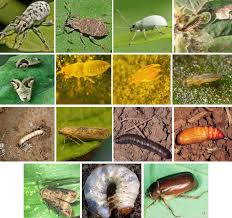
A. Direct Effects Of Insect Feeding
1. Leaves eaten: This reduces photosynthetic area and stunts growth. Examples: grasshoppers, caterpillars, leaf beetles.
2. Leaves rolled or webbed: Caused by larvae of skippers and other Lepidoptera.
3. Leaves mined: Leaves develop tunnels or blotch mines, e.g., spinach leaf miner.
4. Buds eaten: Destroys growing points and flowers, e.g., budworms and grape flea beetle.
5. Flowers and fruits eaten: Examples include pollen beetles and blister beetles.
6. Fruits bored: Leads to premature fruit drop, e.g., mango and coffee fruit flies.
7. Stems bored: Kills the upper part of the stem, e.g., Earias spp. in cotton.
8. Seedlings bored: Produces “dead heart”, e.g., Atherigona and Chilo spp. in cereals.
9. Woody stems ring-barked: Caused by Anthores spp. on coffee.
10. Roots damaged: Loss of water and nutrient absorption, e.g., chafer grubs and weevil larvae.
11. Tubers and corms bored: Reduces food reserves and impairs storage and regrowth. Examples: Cylas spp. in sweet potatoes, yam beetles.
B. Damage By Sucking Insects And Mites
1. Loss of vigour: Due to excessive sap removal. Examples: aphids and whiteflies.
2. Leaf-curling and deformation: Caused by aphids, thrips, mealybugs.
3. Premature leaf fall: Common among diaspidid scales.
4. Leaf and fruit scarring: Due to epidermal damage by spider mites and thrips.
5. Toxic saliva: Causes fruit abortion in crops like cotton and coconut.
6. Infection sites: Feeding wounds become entry points for fungi and bacteria.
C. Indirect Effects Of Insects On Crops:
1. Difficulty in harvesting: Crop distortion from pests like Earias spp.
2. Delayed maturity: Bollworms in cotton may cause extended growth and spreading habits.
3. Grain distortion: Leads to low-quality harvests.
4. Contamination and quality loss: Impacts market value and nutritional content.
Transmission Of Disease Organisms By Insect Vectors
Viral diseases such as cassava mosaic, tobacco mosaic, and banana bunchy top are transmitted by insect vectors.
Mechanical transmission occurs when feeding injuries allow fungi or bacteria to enter the plant. The pathogens may be carried on the proboscis of insects or on the bodies of tunneling pests.
Insect Pest Control
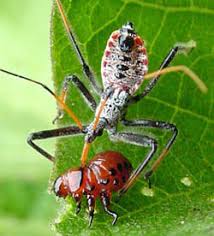
Insect pests pose a significant threat to crop production, but several methods can be used to control them. These include cultural practices, chemical insecticides, and biological control methods.
A. Cultural Methods of Insect Control
1. Hand Picking: This method involves manually removing pests, such as adult grasshoppers and caterpillars, from crops.
2. Crop Rotation: Since pests tend to favor specific crops, rotating crops can reduce pest populations by disrupting their life cycle.
3. Tillage Practices: Ploughing and harrowing expose soil pests to sunlight, desiccation, and predators, thereby reducing their numbers.
4. Weed Control: Weeds often serve as hosts to pests. Timely weed control deprives insects of their food source.
5. Adjusting Time of Planting: Planting crops early, such as sorghum, ensures flowering occurs before insect populations peak, thus preventing damage from pests like sorghum midges.
6. Resistant Varieties: Growing pest-resistant crop varieties is an effective way to reduce pest damage.
7. Timely Harvesting: Early harvesting helps protect crops like maize and beans from pests like the maize weevil and bean bruchid.
8. Observing a Closed Season: Some pests, like the pink bollworm, cannot survive without their host. A closed season prevents them from finding a host, reducing their numbers for the next cycle.
9. Trap Cropping: Planting a crop that attracts pests away from the main crop reduces damage. Trap crops are typically grown in strips within the field.
10. Optimum Plant Density: A higher plant density can reduce pest damage. For example, densely planted kidney beans experience less damage from the bean fly.
11. Crop Sanitation: Clearing crop fields after harvest and burning crop residues can destroy overwintering pests.
12. Cropping Patterns: Intercropping can help control pest spread and reduce the overall pest population.
B. Chemical Method of Insect Pest Control
Insecticides are commonly used to control insect pests by spraying or dusting crops. The choice of insecticide depends on the pest’s feeding habits.
1. Stomach Poisons: These are used to control biting and chewing insects. Examples include lead arsenate and Paris green.
2. Contact Poisons: These insecticides kill pests upon contact. Examples include Gammexane, Lindane, and nicotine sulfate.
3. Fumigants: Insect pests in stored products are controlled by fumigants, which are available in gaseous, liquid, or powder forms. Examples include carbon disulphide and methyl bromide.
C. Biological Method of Pest Control
Biological control utilizes living organisms to manage pest populations. This includes the use of predators, such as natural enemies of pests, and pathogens like bacteria, fungi, and viruses. For example, the parasitic wasp Anagyrus spp. has been used to control the Kenya mealbug.
Read Also: General Principles of Goat Production
Plant Diseases
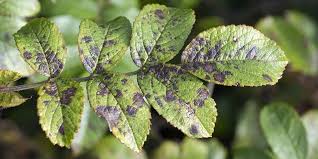
Plant diseases involve abnormal growth or structure changes that affect crop yield and quality. Disease symptoms can be recognized by visible signs such as discoloration, stunting, or wilting, which lead to reduced productivity.
A. Symptoms of Plant Diseases
1. Necrosis (Death of Tissues): Characterized by lesions on leaves and other plant parts, often with scalded or blotchy appearances.
2. Abnormal Tissue Growth: Symptoms like galls, cankers, and witches’ brooms are caused by hypertrophy or hyperplasia of plant cells.
3. Stunting or Dwarfing (Hypoplasia): A common symptom where plants fail to reach normal growth sizes.
4. Yellowing (Chlorosis): Often seen around necrotic areas, indicating nutrient deficiencies or disease.
5. Wilting: Caused by a disruption in the plant’s water transport system, leading to dry, collapsed plants.
6. Unusual Organ Development: Some diseases cause plants to produce abnormal flowers or structures, such as maize infected with Ustilago maydis.
7. Rotting: Disintegration of plant tissue, which may either release fluids (wet rot) or crumble (dry rot).
8. Excessive Gum Formation (Gummosis): Common in trees, this is associated with certain plant diseases.
B. Causes of Plant Diseases
Plant diseases are caused by various agents, either alone or in combination. These agents include:
1. Microorganisms: Bacteria, fungi, and viruses are the primary agents behind most plant diseases.
2. Nematodes: These microscopic worms also contribute to crop diseases.
3. Insects: Some insects act as vectors, transmitting diseases from one plant to another.
4. Parasitic Plants: Examples include broomrape (Orobanche), dodder (Cuscuta), and witchweed (Striga).
5. Environmental Factors: Factors like mineral deficiencies or extreme environmental conditions can also lead to plant diseases.
C. Pathogens and Parasites
1. Obligatory Parasites: These organisms depend entirely on their host for survival. They can only grow on living plants and may cause mild symptoms like stunting or discoloration.
2. Facultative Parasites: These can also live independently of their host. They tend to cause more severe damage, such as wilting or necrosis.
D. Causal Agents of Crop Diseases
1. Fungi: The majority of plant diseases are caused by parasitic fungi. These fungi often spread via spores, which are carried by air, water, or insects. Examples include Phytophthora species, which cause black pod disease in cocoa, and Pythium, which causes damping-off disease in seedlings.
2. Bacteria: Bacterial diseases are often marked by decay and foul odors. Common examples include bacterial wilt in tomatoes and tobacco.
Do you have any questions, suggestions, or contributions? If so, please feel free to use the comment box below to share your thoughts. We also encourage you to kindly share this information with others who might benefit from it. Since we can’t reach everyone at once, we truly appreciate your help in spreading the word. Thank you so much for your support and for sharing!

